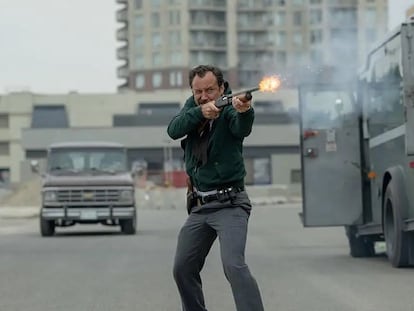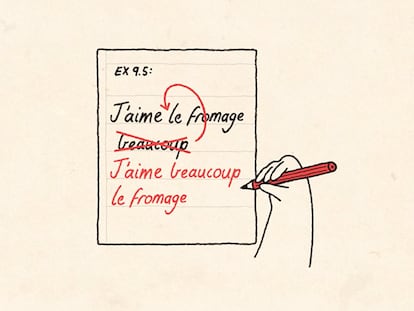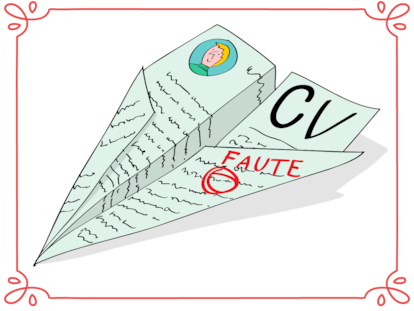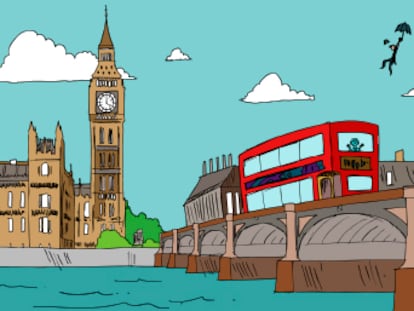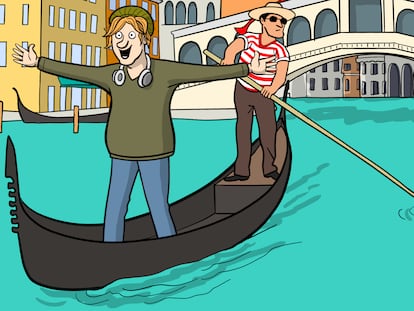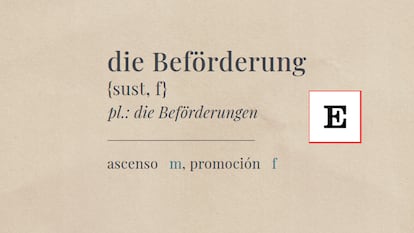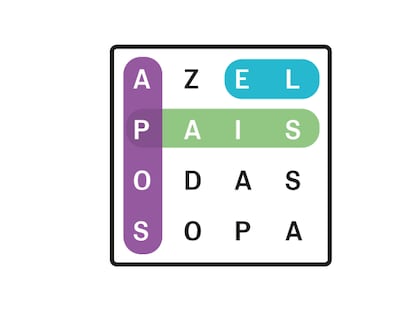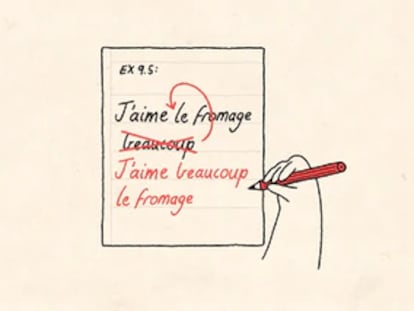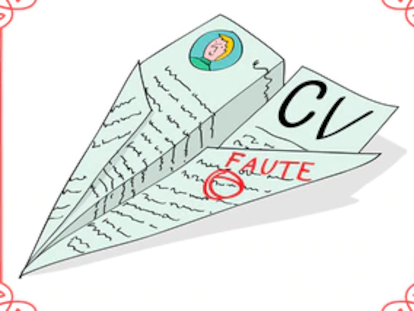A marriage in crisis and $147 million in losses: The pirate movie that ruined a company
Thirty years ago, ‘Cutthroat Island’ was meant to be an innovative adventure story led by a female star. However, an unrestrained producer and a series of misfortunes transformed it into one of the biggest flops of the decade
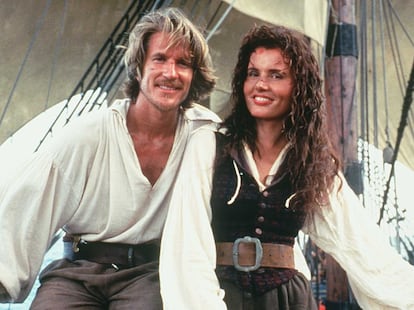
Melancholic peoples, in the words of Australian historian Christopher Clark, celebrate their defeats. Clark was referring specifically to the Serbs, who have been commemorating the “glorious” Battle of Kosovo for over 600 years — an event that made them vassals of the Ottoman Empire.
Had Carolco Pictures survived its disastrous December in 1995, it might still be a melancholic company today, celebrating its own grand defeat — Cutthroat Island. But the production company founded by Beirut businessman Mario F. Kassar collapsed that month after investing around $115 million in a film that grossed just $16 million — $10 million in the U.S. and Canada, and an additional $6 million worldwide. Not even the notorious flops like Dune, Cleopatra, Waterworld, Popeye, or Heaven’s Gate, were such a catastrophic failure.
Film critic Tim Robey devotes one of the most compelling chapters of his latest book, Box Office Poison, to Cutthroat Island. Robey treats the film with a certain degree of indulgence. He finds it remarkable that the film chose to center on an action heroine in the deeply patriarchal 1990s, and he praises the performances of Geena Davis in the lead role and the ever-reliable Frank Langella as the sly, psychopathic villain. He even offers kind words for the direction of Finnish filmmaker Renny Harlin, a protégé of Don Siegel who had made a name for himself with bold blockbusters like Nightmare on Elm Street 4 and Die Hard 2.
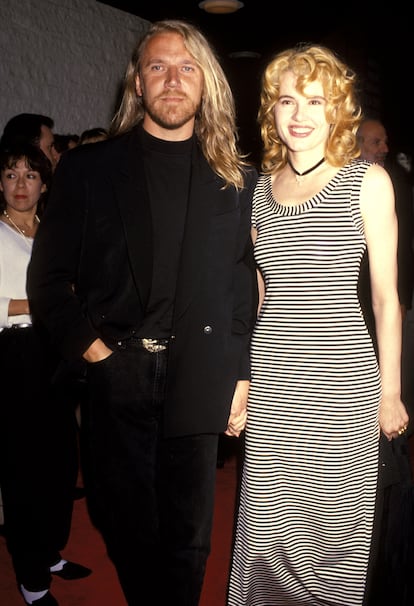
What’s more, Toby appreciates the effort to revive the swashbuckling pirate subgenre in the final stretch of the 20th century, following in the footsteps of Captain Blood (1935). This had already been attempted shortly before by Roman Polanski with Pirates (1986) and Ferdinand Fairfax with Nate and Hayes (1983). Ultimately, the critic attributes the film’s flaws and the overall failure of the operation to the culture of ostentation and excess that Kassar brought with him when he burst onto the Hollywood scene in the late 1980s.
The man who wanted to reign Hollywood
After spending his first two decades in the business distributing French and Italian films in Southeast Asia, Kassar rented a small office in Los Angeles' Melrose district and began to build an impeccable network of contacts. Between 1990 and 1992, he produced three iconic action films in a row: Total Recall, Terminator 2: Judgment Day, and Basic Instinct — a triad of box-office hits that not only propelled the careers of Arnold Schwarzenegger and Sharon Stone but also solidified Dutch director Paul Verhoeven as the new Midas of Hollywood, a postmodern and wilder version of Steven Spielberg.
By this point, as Tobey explains, Carolco had “a fleet of huge limousines with tinted windows parked on the corners of Bel-Air.” Its parties at the Hotel du Cap during the Cannes Film Festival became legendary. However, Kassar had a partner: Hungarian producer Andrew G. Vajna, a man far more cautious than he. Vajna had been with Kassar from the early days when the only staff were the Hungarian’s wife and the Lebanese producer’s girlfriend. But he chose to part ways in 1990 — just before Carolco achieved the success it had long coveted, but also before it embarked on a reckless spiral of extravagant spending.
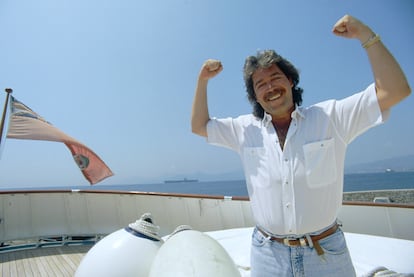

Without the restraint and common sense imposed by his more cautious colleague, Kassar squandered the immense capital he had accumulated during his glory years. In 1991, despite the nearly $520 million that James Cameron helped him raise with Terminator 2, Carolco ended the year with losses of $260 million, forcing the company to restructure its debt. Kassar would later explain that he saw this as a pivotal turning point — a growth crisis that would ensure the company’s future — and he felt compelled to continue spending lavishly. Like Pacino’s character in Scarface, he aspired to remain the sole kingpin at the top, but in reality, he was digging his own grave.
By 1994, with the company becoming a hostage to its creditors despite a few minor successes like Cliffhanger, Kassar decided to gamble his future on a couple of bold moves. The first was a project involving two of his favorite collaborators, Paul Verhoeven and Arnold Schwarzenegger. It was called Crusade, pitched as a cross between Spartacus and Conan the Barbarian. Arnie and Paul were willing to make it for a modest $100 million — just a fifth of what they expected it to gross after a successful release scheduled for the summer of 1995. However, the film was cancelled just as production was about to begin, following an unexpected altercation at Carolco headquarters where Kassar and Verhoeven nearly came to blows. The second gamble was Cutthroat Island, a pirate film — a genre that Kassar, in his youth — without great intellectual pretensions.
A poisoned wedding gift
Now, let’s rewind to September 1993, when Renny Harlin, the rising Scandinavian director making a name for himself in Hollywood, married Geena Davis, the actress from The Fly, The Accidental Tourist, and Thelma & Louise. At 37, Davis was considered to be at the peak of her career. It was a Carolco wedding — opulent, extravagant, and full of excess. Hundreds of guests attended a Versailles-like ceremony held in the ruins of an old Napa Valley distillery at dusk.
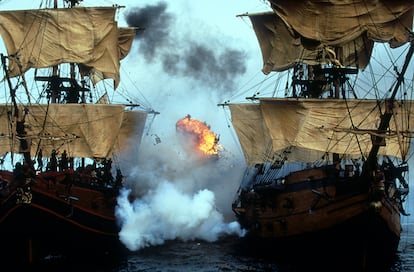
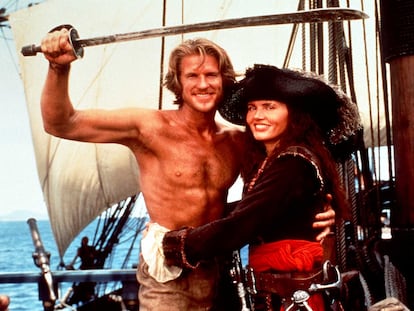
The director and actress had met six months earlier, at the suggestion of Davis’s agent. In industry circles, it was widely assumed that their partnership was both commercial and romantic, and that they would soon collaborate on a film together. Kassar considered Harlin one of his go-to directors because he was talented, relatively easy to work with, and, like Kassar, had a fondness for expensive toys. The trade magazine Variety even went so far as to claim that Cutthroat Island was Harlin’s wedding gift to Davis, with funding coming from his film godfather, Kassar.
At this point, Davis wasn’t particularly interested in being the star of the film. Her main priority was ensuring the film’s success, and she was counting on a major male lead to help achieve that. She hoped Michael Douglas, the star of Basic Instinct, would take the role. However, Douglas, who had already struck a financial deal with Carolco, was dismayed to see his character’s role shrink with each new draft of the script. In the latest version he received, his character, William Shaw, an Errol Flynn-inspired rogue, had been reduced to a mere sidekick to Davis’s pirate, Morgan Adams.
Douglas turned down the role, saying he was unwilling to be overshadowed so blatantly by Davis, with whom he apparently did not get along very well. Harlin attributed this disagreement to the “chaotic” script revisions, where the screenplay changed hands multiple times without him or Carolco exercising any real creative control. By the time Harlin decided to take matters into his own hands, investing a million dollars of his own money to hire a reliable screenwriter, Mark Norman, it was too late to bring Douglas back on board — the man who was meant to make the film a success.
In the months that followed, the role of William Shaw was offered to a number of top-tier actors, including Tom Cruise, Mel Gibson, Keanu Reeves, Jeff Bridges, Charlie Sheen, Michael Keaton, Kurt Russell, Ralph Fiennes, Gabriel Byrne, and Daniel Day-Lewis. Harlin believes that any of them would have made the film something very different from what it ultimately became.
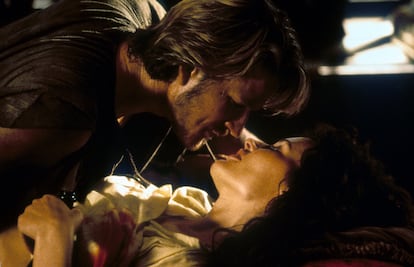
In the end, Matthew Modine was chosen—almost the only actor of any significant reputation willing to join the production, which was about to begin in Malta and Thailand. Given that it was clear to everyone involved, including Davis and Harlin, that Modine was neither a great actor nor a big star, it was deemed unnecessary to rework the script to give his character more prominence.
Despite the considerable savings in hiring the Full Metal Jacket actor instead of someone like Tom Cruise or Mel Gibson, production costs skyrocketed once Harlin took over. For one, as James Robert Parish explains in his book Fiasco: A History of Hollywood Iconic Flops, the director found the pirate ship the production team had designed unconvincing and ordered a new, much more expensive one, hoping it would look spectacular when set on fire and blown up. In particular, Harlin devoted considerable attention to the two banks of 20 cannons, exact replicas of 17th-century originals, on which he spent a couple of million dollars.
Love’s labour lost
Filming was chaotic, to say the least. According to Parish’s hilarious account, both Langella and Modine suffered contusions during the action scenes. Davis nearly broke her neck when she fell off a wagon that almost ran over her, in what appeared to be a simple but risky scene that her husband insisted she repeat several times until she lost her footing. Harlin fired 24 members of the technical team, including a cameraman with whom he had a shouting match in the middle of a take.
But the most infamous anecdote (though Modine would later deny it on the 25th anniversary of the film’s release) involves British actor Oliver Reed, who was 56 at the time and would die just a few years later, in 1999. Reed was hired for a supporting role as the pirate Mordecai Fingers but was fired on the first day of filming, reportedly after getting into a bar fight and exposing his bare bottom to a horrified Geena Davis.
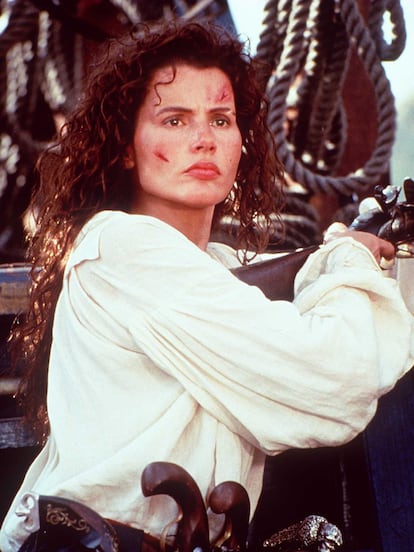
Modine had a hard time holding back his laughter and keeping a straight face when he defended the film’s reputation, claiming that the story was “most likely” an urban legend: “I can’t imagine Oliver Reed doing something like that. Oliver was a gentleman. Yes, he had a reputation as a drinker, and he certainly enjoyed a drink. But not when he was on duty. He was an exceptional actor. A star. A professional. And I’ll say no more. God bless him.”
In the end, the cursed film was released just weeks after Kassar spent every penny available and declared bankruptcy. He had even squandered advances from international distributors. So it can be argued that it wasn’t Cutthroat Island that ruined a company that was already on its last legs, but it certainly helped add a few nails to its coffin.
The company that distributed the film in the United States, Metro-Goldwyn-Mayer, was about to change ownership and barely promoted the film, which it did not believe in. To make matters worse, according to Parish, it was clear that audiences of popcorn cinema were not ready in 1995 (and likely not until well into the 21st century) to embrace an action film starring a woman — a trend that would be demonstrated again years later by the failures of films like Catwoman (2004) and Aeon Flux (2005).
Yet, the misely $16 million that such an expensive and ambitious film earned now seems like an incomprehensible affront — almost like a massive boycott by its natural audience — which Cutthroat Island perhaps did not deserve. Its total losses have been calculated at $147 million. It is certainly far superior to the vast majority of contemporary pirate films, especially the abysmal Disney saga starring Johnny Depp.
Moreover, with all its faults, Cutthroat Island was a brave, unprejudiced film — a wedding gift, an act of love more valuable and meaningful than any diamond of infinite carats. If only for that, it deserves to be remembered, 30 years later, as a noble and resounding defeat. The kind of defeat that melancholic nations celebrate.
Sign up for our weekly newsletter to get more English-language news coverage from EL PAÍS USA Edition
Tu suscripción se está usando en otro dispositivo
¿Quieres añadir otro usuario a tu suscripción?
Si continúas leyendo en este dispositivo, no se podrá leer en el otro.
FlechaTu suscripción se está usando en otro dispositivo y solo puedes acceder a EL PAÍS desde un dispositivo a la vez.
Si quieres compartir tu cuenta, cambia tu suscripción a la modalidad Premium, así podrás añadir otro usuario. Cada uno accederá con su propia cuenta de email, lo que os permitirá personalizar vuestra experiencia en EL PAÍS.
¿Tienes una suscripción de empresa? Accede aquí para contratar más cuentas.
En el caso de no saber quién está usando tu cuenta, te recomendamos cambiar tu contraseña aquí.
Si decides continuar compartiendo tu cuenta, este mensaje se mostrará en tu dispositivo y en el de la otra persona que está usando tu cuenta de forma indefinida, afectando a tu experiencia de lectura. Puedes consultar aquí los términos y condiciones de la suscripción digital.

